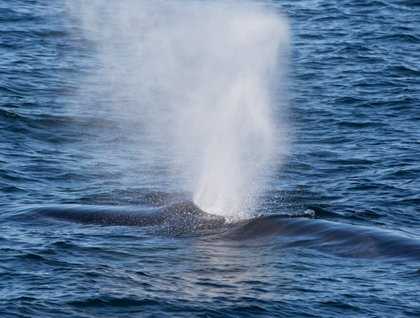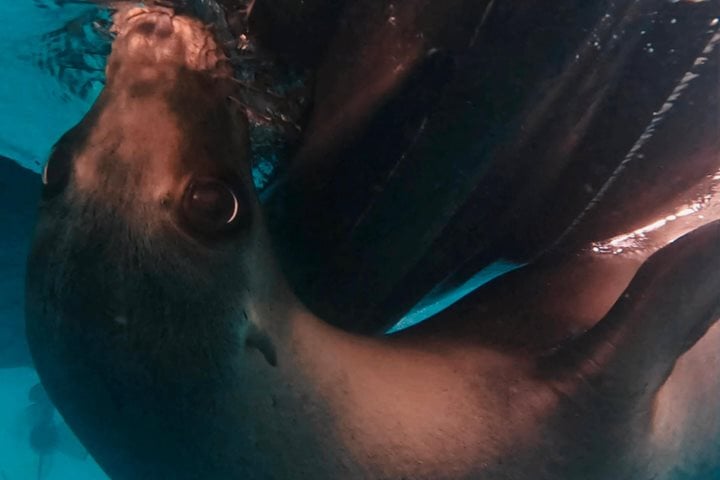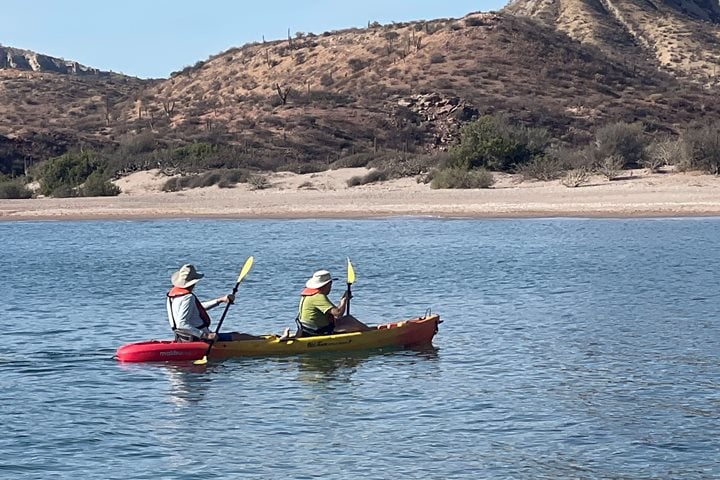We started our day sailing the calm waters in the vicinity of San Marcos and Tortuga Islands; the light breeze and lack of clouds in the sky made a great combination for a very nice morning. We watched numerous flocks of phalaropes –small, sea-going migratory birds related to the sandpipers- sitting in the water or flying around, brown boobies plunging trying to capture fish and even the occasional pomarine jaeger or red-billed tropic bird. However, what really made our morning was a group of several fin whales! The second largest whale after the blue, the fin whale is also one of the most handsome, with whitish chevrons and dark blazes on its back and a white right lower jaw (the left one is all dark!). Although the species is found in all the world’s cold and temperate oceans, there is a resident population here of around one thousand individuals that never leaves the Sea of Cortez.
The National Geographic Sea Bird continued her way south and arrived to San Ildefonso Island, where we boarded the Zodiacs to explore its shoreline. San Ildefonso Is. is an important nesting site of several species of sea birds and we got the marvelous chance to watch many brown boobies, magnificent frigate birds and brown pelicans flying around or tending their chicks.
Later on we arrived to Gull Rock in the Baja California peninsula and went ashore, where hiking a desert canyon made for the perfect ending of another beautiful day.







